A Remedy for Rolling Blackouts: Integrating Distributed Energy Resources for a More Resilient Grid
From attacks on power stations to equipment failures, many North Carolina residents are wary about being left in the dark from worsening outages caused by the electric grid’s aging infrastructure in addition to other critical weaknesses. In early December, over 45,000 customers in Moore County were left without power after two electrical substations were disabled from a barrage of gunfire. The subsequent outage lasted from December 3 through December 5, 2022.
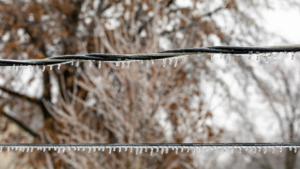 Then, rolling blackouts on Christmas Eve impacted roughly 500,000 Duke Energy customers after three power plants malfunctioned in freezing temperatures from an arctic blast sweeping through the Southeast. Duke Energy leaders explained the unique chain of events leading up to the curtailment of power to customers in North Carolina and South Carolina to the North Carolina Utilities Commission in January of 2023 and vowed to learn from the experience to help prevent it from occurring that way again.
Then, rolling blackouts on Christmas Eve impacted roughly 500,000 Duke Energy customers after three power plants malfunctioned in freezing temperatures from an arctic blast sweeping through the Southeast. Duke Energy leaders explained the unique chain of events leading up to the curtailment of power to customers in North Carolina and South Carolina to the North Carolina Utilities Commission in January of 2023 and vowed to learn from the experience to help prevent it from occurring that way again.
While the events of December 2022 may have underscored several vulnerabilities of the United States’ electrical grid, they also shed light on the many opportunities to enhance grid resilience and reliability with renewable energy. According to Steve Kalland, Executive Director of the NC Clean Energy Technology Center (NCCETC), “The time to strengthen the grid is now, and one of the best ways to improve resilience is by deploying more distributed energy resources like solar energy, battery storage and microgrids.”
Resilience-Ready Improvements with Renewable Energy
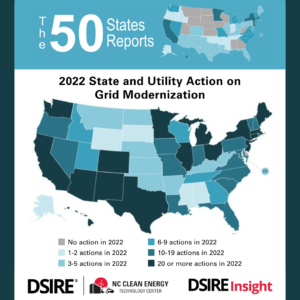 Across the United States, state legislators and utilities are focused on supporting a more decentralized, resilient electrical grid. NCCETC’s 2022 annual review and Q4 2022 update edition of The 50 States of Grid Modernization found that 49 states and the District of Columbia took a total of 778 policy and deployment actions related to grid modernization during 2022.
Across the United States, state legislators and utilities are focused on supporting a more decentralized, resilient electrical grid. NCCETC’s 2022 annual review and Q4 2022 update edition of The 50 States of Grid Modernization found that 49 states and the District of Columbia took a total of 778 policy and deployment actions related to grid modernization during 2022.
Autumn Proudlove is the Associate Director at NCCETC and oversees the Policy & Markets program. She identified a central theme of resilience in many of the grid modernization activities which took place in 2022. “Many states are promoting investments in distributed energy resources like battery storage, solar, and microgrids because of the reliability these services provide grid operators,” said Proudlove.
Distributed energy resources (DERs) are small-scale energy resources that are interconnected to the electric grid. DERs not only help to diversify a state’s generation mix to reduce the grid’s dependency on a single fuel type, but they can also provide key energy supply when larger generators go offline during severe weather or other incapacitating events.
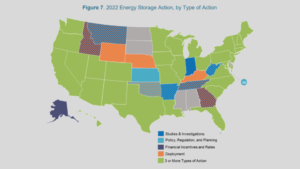 Proudlove noted major regulator and lawmaker interest in encouraging the deployment of energy storage and microgrids through new statewide incentives or changes to existing incentives. Additionally, a number of utilities filed plans to offer new battery storage demand response programs to boost grid flexibility.
Proudlove noted major regulator and lawmaker interest in encouraging the deployment of energy storage and microgrids through new statewide incentives or changes to existing incentives. Additionally, a number of utilities filed plans to offer new battery storage demand response programs to boost grid flexibility.
STRENGTHENING THE GRID WITH SOLAR PLUS STORAGE
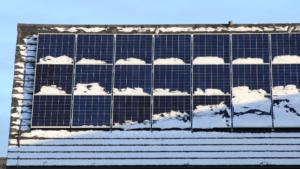 Some individuals are wary of more widespread adoption of renewable energy and questioned its reliability after Duke Energy instituted the rolling blackouts in late December, but the diminished generation capacity was due to equipment failures and frozen lines at gas and coal-fired plants. Once the sun came up on Christmas Eve, solar performed well even in frigid temperatures.
Some individuals are wary of more widespread adoption of renewable energy and questioned its reliability after Duke Energy instituted the rolling blackouts in late December, but the diminished generation capacity was due to equipment failures and frozen lines at gas and coal-fired plants. Once the sun came up on Christmas Eve, solar performed well even in frigid temperatures.
Duke Energy spokesman Jeff Brooks said storage is a huge opportunity for improvement for the company in an interview with WRAL Investigates. Experts at NCCETC agree that storage is an efficient way to tap into existing distributed generation sources in the Duke Energy Progress region of North Carolina.
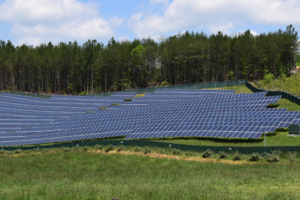 Last year, NCCETC collaborated with the NC Department of Environmental Quality for the North Carolina Power Reserves Project – an analysis of utility operating reserves required to balance increasing quantities of solar photovoltaic (PV) generation being added to Duke Energy’s power grid. The project aimed to better understand the current needs for operating reserves at the intersection of energy demand and increased levels of solar PV grid integration.
Last year, NCCETC collaborated with the NC Department of Environmental Quality for the North Carolina Power Reserves Project – an analysis of utility operating reserves required to balance increasing quantities of solar photovoltaic (PV) generation being added to Duke Energy’s power grid. The project aimed to better understand the current needs for operating reserves at the intersection of energy demand and increased levels of solar PV grid integration.
The study found that the time of day of peak electric demand has a big impact on the contribution of solar generation to meeting the peak demand; when the sun is shining, solar’s contribution toward meeting aggregate demand is noticeable and considerable, but, if peak demand occurs in the early morning or late evening there is a negligible contribution from solar during this time.
Deploying additional battery storage resources would increase the availability of solar energy for peak demand periods outside of normal daytime hours or when solar insolation is low due to weather conditions as well as during times when traditional fossil fuel-fired generating resources are unavailable or operating at reduced capacity.
On a larger scale, investor-owned utilities in some regions of the United States have recently begun offering “Community Resiliency” programs wherein a commercial-scale customer (often a school, church or community center) hosts utility-owned solar-plus-storage system, which can provide economic and resilience benefits for the customer, the utility and the surrounding community.
To explore these benefits, NCCETC staff partnered with Roanoke Electric Cooperative to design and conduct feasibility studies for community resiliency service programs involving utility-owned energy storage system deployment to support critical community centers. The team also identified and planned outage scenarios to meet power requirements and resilience needs at 100 percent and 75 percent load capacity.
This partnership was part of one of two projects funded through the American Rescue Plan Act (ARPA) NCCETC participated in between March and September 2022. The ARPA project “Achieving Resilience Benefits Through Utility Solar + Storage Deployment in Low-Income Communities” investigated onsite generation options for community facilities identified by electric cooperatives to help address weather-related resilience needs.
NCCETC announced that it was selected to receive a $1 million award from the U.S. Department of Energy (DOE) Solar Energy Technologies Office (SETO) to enable communities to use solar and solar-plus-storage to enhance resilience and prevent disruptions in power caused by extreme weather and other events. The Resilient Renewable Energy to Diminish Disaster Impacts on Communities (Resilient REDDI Communities) project will develop a novel set of resiliency metrics and create a playbook to guide emergency managers and their communities to assess and implement enhanced energy resilience strategies to mitigate the effects of energy loss during a disaster.
Isaac Panzarella, Associate Director of Technical Services for NCCETC, is serving as principal investigator for the Resilient REDDI Communities project. The project will aim to identify ready-to-develop solar PV and energy storage projects that can benefit the cohort of up 12 diverse communities. Panzarella said, “A primary focus of the project will be the use of distributed energy resilience resources, such as solar and energy storage, at several levels of local disaster response.”
Emergency Management agencies have extensive responsibilities and energy assurance is only one of many key emergency support functions. The Resilient REDDI Communities project playbook will include a framework for integrating enhanced community energy resilience in the planning and execution for each phase of emergency management.
MITIGATING OUTAGES WITH MICROGRIDS
There are many opportunities for existing DERs to strengthen resilience to reduce the likelihood and consequences of outages. Community microgrids rely on DERs to supply renewables-driven backup power for critical infrastructure. Public and state agencies with electric vehicles or energy storage batteries can use these as assets in microgrids, allowing them to be isolated from the grid and keep power flowing locally.
Christina Kopitopoulou, Senior Project Manager for NCCETC’S Clean Power & Industrial Efficiency program, is currently working with other NCCETC staff as part of a collaborative effort among state government, utility companies, industry and universities to design an advanced microgrid control architecture to ultimately improve the resilience and reliability of the regional grid. The NCCETC staff are supporting the team from UNC Charlotte’s Energy Production and Infrastructure Center (EPIC), which won a Research Grant entitled “Resilient Community Microgrids with Dynamic Reconfiguration to Serve Critical Loads in the Aftermath of Severe Events” from SETO.
The project focuses on technology innovations for community microgrids as a potential solution to electrical outages experienced by customers across the country due to increased extreme weather events. Microgrids can support critical services in communities like life-saving medical equipment during extended outages. Kopitopoulou stated, “These resources help bridge the gap between the outage and power being returned to the main grid, and are beneficial for building community resilience.”
One of the most critical needs for greater adoption of community microgrids is the development of advanced control schemes that can seamlessly adapt their settings as the microgrid connects and disconnects from the main grid. The project will also examine control techniques that can optimize resources given projected storm conditions- something that could help mitigate rolling blackouts like those caused by Winter Storm Elliot in December.
Kopitopoulou recently gave a presentation on “Combined Heat and Power (CHP) for Enhanced Resiliency at Public Facilities and Institutions” at the 2023 2G North American CHP Tour’s event in Puerto Rico on February 9, 2023. Kopitopoulou’s presentation focused on systems that are designed to operate during grid outages to support facilities that provide public service, such as hospitals, schools, wastewater treatment plants, airports and more.
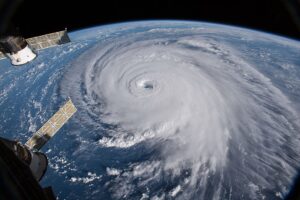 Due to grid reliability issues in Puerto Rico, there is an increasing number of facilities that are installing such systems to support their operations and reduce costs, following the example of peers that remained operational during hurricanes that caused long duration power outages. CHP microgrids combined with other distributed resources such as solar photovoltaic (PV) and storage have the ability to provide both electricity and heating or cooling 24/7 during normal grid operations and during outages.
Due to grid reliability issues in Puerto Rico, there is an increasing number of facilities that are installing such systems to support their operations and reduce costs, following the example of peers that remained operational during hurricanes that caused long duration power outages. CHP microgrids combined with other distributed resources such as solar photovoltaic (PV) and storage have the ability to provide both electricity and heating or cooling 24/7 during normal grid operations and during outages.
“Local governments can leverage these systems during extreme weather events to support the local population at times of need,” explained Kopitopoulou. Other local presenters echoed the need for increased resiliency through DERs that have the capability to provide grid services but also island when the grid is down or stressed.
Utilities looking for a path towards building a resilient and reliable grid can find solutions in diversifying energy generation with renewable energy resources and increasing revenue streams with DERs configured to respond to power outages. Investments in DER management systems and battery storage will enable grid management and flexibility while also taking steps to create a more sustainable energy mix in the United States.